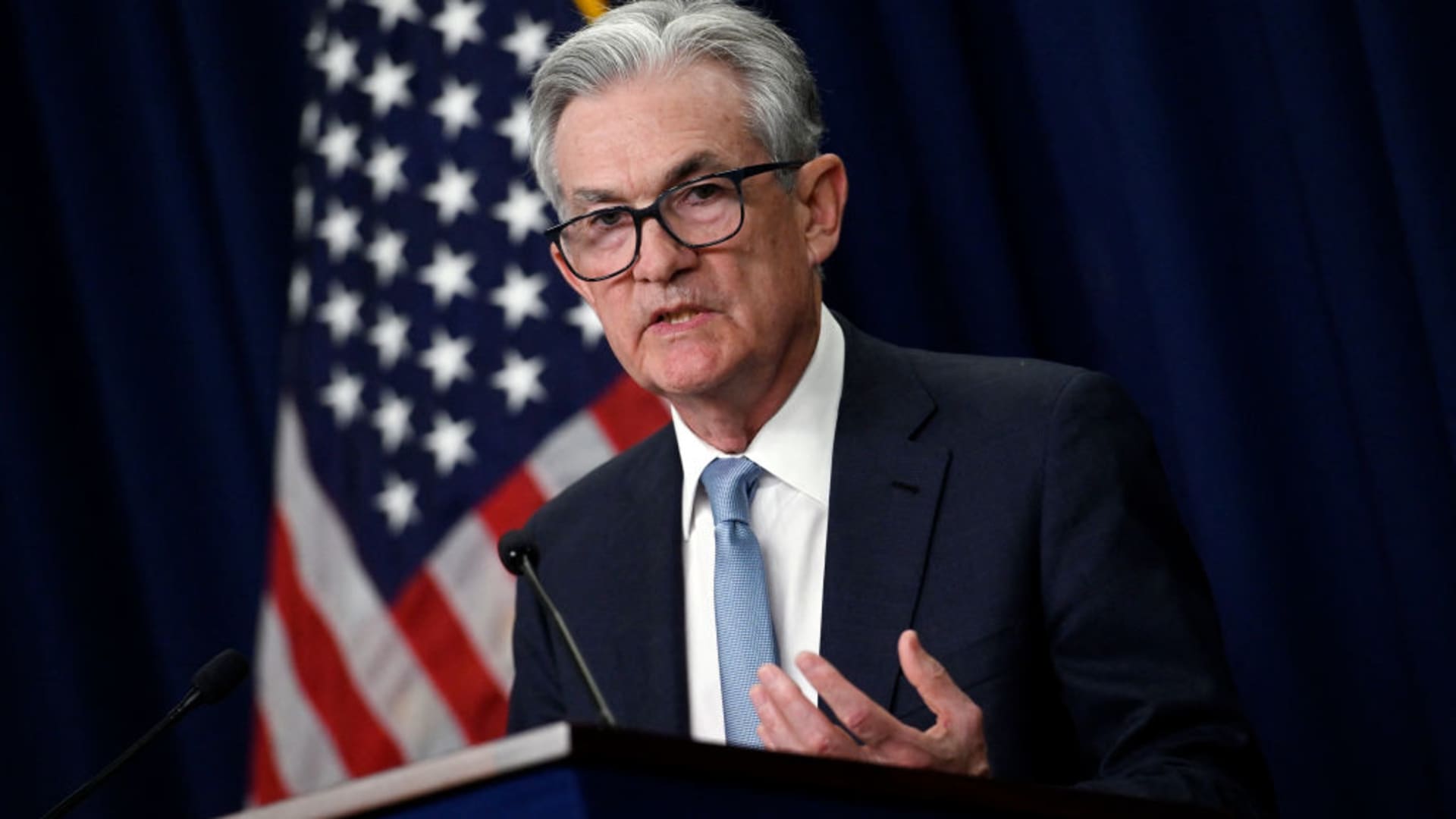
Jerome Powell, chairman of the US Federal Reserve.
Bloomberg | Bloomberg | Getty Images
(Follow our live coverage of the Fed rate decision today.)
The Federal Reserve will close its two-day meeting Wednesday with a heavy air of uncertainty as the central bank moves forward in its efforts to bring down inflation and stabilize the troubled banking sector.
At the moment, those two goals seem to be in conflict: Getting inflation down requires the same higher interest rates that have inflicted crisis-level effects on banks.
Still, after much volatility markets seem to have coalesced around expectations that the rate-setting Federal Open Market Committee will approve a 0.25 percentage point, or 25 basis point, increase.
But that won’t be all that policymakers will have to address.
They’re also on tap to update rate and economic projections, and Fed Chairman Jerome Powell then will have to explain it all at his post-meeting news conference.
Here’s a quick look at everything likely to happen.
The rate call
If the Fed goes ahead and raises its benchmark funds rate by a quarter point, that will take it to a target range of 4.75%-5%, its highest since late 2007.
Up until the recent events in the banking industry, the rate hike was considered a no-brainer. Comments from Powell two weeks ago even had markets thinking the Fed could go half a point. The banking tumult has switched to no hike versus a quarter point.
“Everything is changed,” said Komal Sri-Kumar, president of Sri-Kumar Global Strategies and a frequent Fed critic. “Now what I think they should do and what I think they will announce are the same, namely, a very soft 25 basis point hike.”
Markets agree: As of Wednesday morning, traders were assigning a more than 90% chance of a quarter-point move, according CME Group tracking.
The statement and the Powell presser
Lump these two together, because markets will be poring through both the post-meeting statement and Powell’s meeting with reporters afterward for any and all clues about the Fed’s future path.
One key sentence to focus on in the statement will be, “The Committee anticipates that ongoing increases in the target range will be appropriate in order to attain a stance of monetary policy that is sufficiently restrictive to return inflation to 2 percent over time.”
Variations of that sentence have appeared in FOMC statements since the rate-hiking cycle began in March 2022, but could get altered this time around to suggest a less certain outlook.
Beyond that, Powell will be looked at to provide assurances that the Fed is not on a preset hiking course and is well attuned to the dangers that the banking crisis are posing to policy.
The chairman will say “we are very conscious of the financial issues and we are also concerned about inflation,” Sri-Kumar said. “That’s why we are hiking by 25 basis points. But we will be data dependent. We will not go up too much if it will cause financial trouble to return.”
The dot plot
Every three months, FOMC members fill out their individual projections for rates on their “dot plot.” Before the banking crisis, investors largely were expecting the Fed to raise its estimate for the peak, or terminal, rate beyond the 5.1% projection in December.
That, too, has changed, and markets could be unpleasantly surprised by the resolve Fed officials have to keep fighting inflation even amid an ominous banking climate.
Goldman Sachs is something of an outlier in that it expects the Fed not to hike Wednesday. But it still is looking for three quarter-point raises in the ensuing meetings.
“It does not make sense to tighten monetary policy amidst ongoing stress in the banking system that could present substantial downside risk to the economy,” Goldman economist David Mericle said in a note to clients Monday.
Goldman sees the terminal rate projection rising to 5.375%.
Likewise, Citigroup thinks markets are being too sanguine about where the Fed goes from here.
Along with the pricing in of a hike at this meeting, markets are indicating that the tightening soon will be followed by at least a couple of rate cuts before the end of the year to deal with a slowing economy. Pricing indicates a funds rate down to a range between 4.25% and 4.5%, according to the CME tracker.
“Markets are substantially underestimating the likelihood that policy rates will move higher and then remain at higher levels for longer, in our view,” Citi economist Andrew Hollenhorst wrote Tuesday. “Policymakers do not drop everything to cut rates aggressively when financial stability risks rise.”
Hollenhorst cited several crises in recent memory during which the Fed either paused or cut, only to turn back around and start hiking shortly thereafter, the financial crisis of 2008 being one notable exception.
Economic projections
The Fed also will update its outlook for unemployment, inflation and gross domestic product.
Economists largely expect a few tweaks.
Goldman anticipates those revisions to reflect “somewhat higher GDP growth in 2023, a lower unemployment rate in 2023, and small upward revisions to the inflation numbers.”
The inflation projections could be interesting. Recent data shows that prices and wages remain stubbornly above where the Fed feels comfortable.
Research firm Morning Consult said Tuesday that its indexes point to inflation holding around the same growth rate in March as in February, an indicator that Fed rate hikes are not having their desired impact.
“Despite continually elevated inflation prints, recent instability in the financial system could force the Federal Reserve to pause or slow down potential rate increases, adding to uncertainty about the trajectory of future prices,” the firm said.

